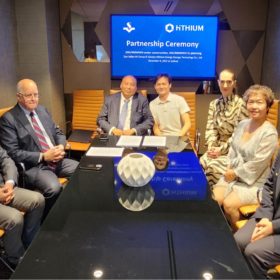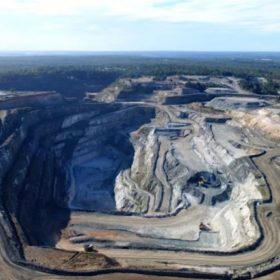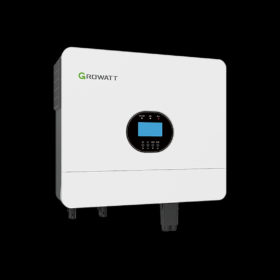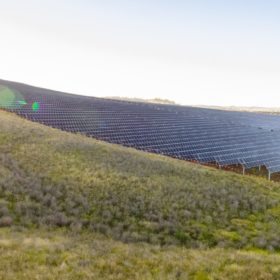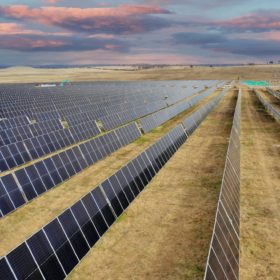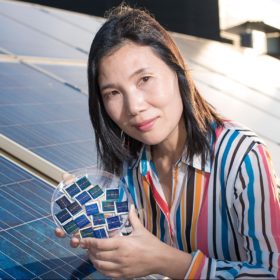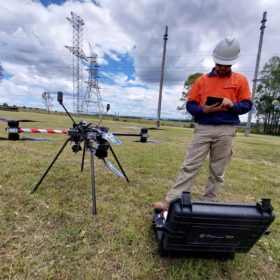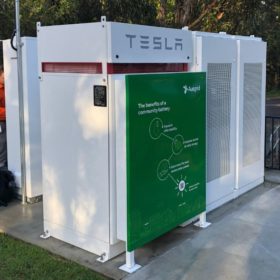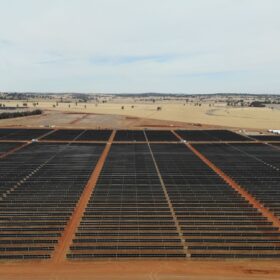Melbourne researchers use sound waves to boost green hydrogen production 14-fold
Researchers from RMIT and the University of Melbourne have discovered high-frequency vibrations can release 14 times more hydrogen compared with standard electrolysis techniques. The discovery also has ramifications for the expensive, rare materials currently used in electrolysers. “With sound waves making it much easier to extract hydrogen from water, it eliminates the need to use corrosive electrolytes and expensive electrodes such as platinum or iridium,” research lead Amgad Rezk said.
Battery maker and solar developer team up for storage play across 8 Australian projects
Chinese battery maker Hithium and Australian solar developer Sun Valley HK Group have agreed to work together on eight solar farms either under construction or in planning in Australia, presumably deploying Hithium batteries at the sites.
More CFOs will soon oversee supply chain management to prevent cost blowouts
The cost of megaprojects is becoming increasingly difficult to estimate, which is causing budget blow outs. Analysis by the Grattan Institute shows that governments in Australia spent $34 billion more on transport infrastructure than first estimated, and that there was a 21% total cost blowout of $20 million-plus projects in the past 20 years. This is a strong example of the need for chief financial officers (CFOs) to participate in managing the cost of inflation through improved communication with stakeholders across supply channels.
Customisable sticker to turn solar panels into advertising billboards
An Italian startup has created a fully recyclable sticker that can be used to cover solar panels on rooftops or facades. It replicates high-definition images that can help to improve the aesthetics of solar arrays or turn PV facades into advertising billboards.
Growatt unveils new inverters for residential off-grid PV systems
Growatt’s new 6 kW inverters have an efficiency rating of 93% and offer 12,000 VA of surge power, up to 500 V of input voltage, and 8 kW of PV input capacity.
Lightsource bp lands finance for Australian solar farms
Renewable energy developer Lightsource bp will begin full construction activities on two large-scale solar projects with a combined installed capacity of 515 MWdc in Australia after successfully closing a $540 million (USD 365 million) financing package.
NSW officially declares Hunter-Central Coast REZ
Another of the coordinated clean energy zones planned for New South Wales is a step closer to being developed with the state government announcing the Hunter-Central Coast Renewable Energy Zone, which has already attracted expressions of interest for almost 40 GW of generation, has been formally declared.
UNSW researchers patent low-cost additive to solve perovskite’s stability problem after achieving world-class results
Researchers from UNSW have discovered a low-cost way to stabilise perovskite solar cells with a “triple function, cheap additive,” research lead Professor Hao tells pv magazine Australia. Perovskite cells using the additive have returned the best stability results yet seen in Australia, according to the team, and among the best in the world.
Infravision targets extra transmission capacity in Transgrid trial
Australian technology start-up Infravision will team with New South Wales network operator Transgrid in a trial of a “next generation” line-monitoring system designed to optimise the performance of existing electrical transmission infrastructure and support the roll out of more renewable energy.
Ausgrid teams with Simply Energy on community battery trial
New South Wales network operator Ausgrid has signed an agreement with Simply Energy which will see the Melbourne-based energy retailer operate the electricity distribution company’s three community batteries in the National Energy Market.

